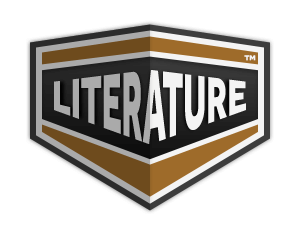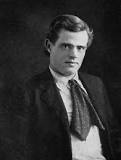The Sun-dog Trail
"The Sun-Dog Trail" is a collection of short stories by Jack London that captures the essence of adventure in the wilderness. Set against the backdrop of the rugged Yukon environment, these tales explore themes of survival, the harsh realities of nature, and the indomitable spirit of man. With vivid descriptions and compelling narratives, London immerses readers in the challenges faced by individuals in the great outdoors, highlighting both the beauty and brutality of the wild. The stories resonate with London's keen observations on life, reflecting his deep respect for nature and the complex relationship between humanity and the untamed world.
Sitka Charley smoked his pipe and gazed thoughtfully at the Police Gazette illustration on the wall. For half an hour he had been steadily regarding it, and for half an hour I had been slyly watching him. Something was going on in that mind of his, and, whatever it was, I knew it was well worth knowing. He had lived life, and seen things, and performed that prodigy of prodigies, namely, the turning of his back upon his own people, and, in so far as it was possible for an Indian, becoming a white man even in his mental processes. As he phrased it himself, he had come into the warm, sat among us, by our fires, and become one of us. He had never learned to read nor write, but his vocabulary was remarkable, and more remarkable still was the completeness with which he had assumed the white man's point of view, the white man's attitude toward things. We had struck this deserted cabin after a hard day on trail. The dogs had been fed, the supper dishes washed, the beds made, and we were now enjoying that most delicious hour that comes each day, and but once each day, on the Alaskan trail, the hour when nothing intervenes between the tired body and bed save the smoking of the evening pipe. Some former denizen of the cabin had decorated its walls with illustrations torn from magazines and newspapers, and it was these illustrations that had held Sitka Charley's attention from the moment of our arrival two hours before. He had studied them intently, ranging from one to another and back again, and I could see that there was uncertainty in his mind, and bepuzzlement. "Well?" I finally broke the silence. He took the pipe from his mouth and said simply, "I do not understand." He smoked on again, and again removed the pipe, using it to point at the Police Gazette illustration. "That picture--what does it mean? I do not understand." I looked at the picture. A man, with a preposterously wicked face, his right hand pressed dramatically to his heart, was falling backward to the floor. Confronting him, with a face that was a composite of destroying angel and Adonis, was a man holding a smoking revolver. "One man is killing the other man," I said, aware of a distinct bepuzzlement of my own and of failure to explain. "Why?" asked Sitka Charley. "I do not know," I confessed. "That picture is all end," he said. "It has no beginning." "It is life," I said. "Life has beginning," he objected. I was silenced for the moment, while his eyes wandered on to an adjoining decoration, a photographic reproduction of somebody's "Leda and the Swan." "That picture," he said, "has no beginning. It has no end. I do not understand pictures." "Look at that picture," I commanded, pointing to a third decoration. "It means something. Tell me what it means to you." He studied it for several minutes. "The little girl is sick," he said finally. "That is the doctor looking at her. They have been up all night--see, the oil is low in the lamp, the first morning light is coming in at the window. It is a great sickness; maybe she will die, that is why the doctor looks so hard. That is the mother. It is a great sickness, because the mother's head is on the table and she is crying." "How do you know she is crying?" I interrupted. "You cannot see her face. Perhaps she is asleep." Sitka Charley looked at me in swift surprise, then back at the picture. It was evident that he had not reasoned the impression. "Perhaps she is asleep," he repeated. He studied it closely. "No, she is not asleep. The shoulders show that she is not asleep. I have seen the shoulders of a woman who cried. The mother is crying. It is a very great sickness." "And now you understand the picture," I cried. He shook his head, and asked, "The little girl--does it die?" It was my turn for silence. "Does it die?" he reiterated. "You are a painter-man. Maybe you know." "No, I do not know," I confessed. "It is not life," he delivered himself dogmatically. "In life little girl die or get well. Something happen in life. In picture nothing happen. No, I do not understand pictures." His disappointment was patent. It was his desire to understand all things that white men understand, and here, in this matter, he failed. I felt, also, that there was challenge in his attitude. He was bent upon compelling me to show him the wisdom of pictures. Besides, he had remarkable powers of visualization. I had long since learned this. He visualized everything. He saw life in pictures, felt life in pictures, generalized life in pictures; and yet he did not understand pictures when seen through other men's eyes and expressed by those men with color and line upon canvas. "Pictures are bits of life," I said. "We paint life as we see it. For instance, Charley, you are coming along the trail. It is night. You see a cabin. The window is lighted. You look through the window for one second, or for two seconds, you see something, and you go on your way. You saw maybe a man writing a letter. You saw something without beginning or end. Nothing happened. Yet it was a bit of life you saw. You remember it afterward. It is like a picture in your memory. The window is the frame of the picture." I could see that he was interested, and I knew that as I spoke he had looked through the window and seen the man writing the letter. "There is a picture you have painted that I understand," he said. "It is a true picture. It has much meaning. It is in your cabin at Dawson. It is a faro table. There are men playing. It is a large game. The limit is off." "How do you know the limit is off?" I broke in excitedly, for here was where my work could be tried out on an unbiassed judge who knew life only, and not art, and who was a sheer master of reality. Also, I was very proud of that particular piece of work. I had named it "The Last Turn," and I believed it to be one of the best things I had ever done. "There are no chips on the table," Sitka Charley explained. "The men are playing with markers. That means the roof is the limit. One man play yellow markers--maybe one yellow marker worth one thousand dollars, maybe two thousand dollars. One man play red markers. Maybe they are worth five hundred dollars, maybe one thousand dollars. It is a very big game. Everybody play very high, up to the roof. How do I know? You make the dealer with blood little bit warm in face." (I was delighted.) "The lookout, you make him lean forward in his chair. Why he lean forward? Why his face very much quiet? Why his eyes very much bright? Why dealer warm with blood a little bit in the face? Why all men very quiet?--the man with yellow markers? the man with white
Translation
Translate and read this book in other languages:
Select another language:
- - Select -
- 简体中文 (Chinese - Simplified)
- 繁體中文 (Chinese - Traditional)
- Español (Spanish)
- Esperanto (Esperanto)
- 日本語 (Japanese)
- Português (Portuguese)
- Deutsch (German)
- العربية (Arabic)
- Français (French)
- Русский (Russian)
- ಕನ್ನಡ (Kannada)
- 한국어 (Korean)
- עברית (Hebrew)
- Gaeilge (Irish)
- Українська (Ukrainian)
- اردو (Urdu)
- Magyar (Hungarian)
- मानक हिन्दी (Hindi)
- Indonesia (Indonesian)
- Italiano (Italian)
- தமிழ் (Tamil)
- Türkçe (Turkish)
- తెలుగు (Telugu)
- ภาษาไทย (Thai)
- Tiếng Việt (Vietnamese)
- Čeština (Czech)
- Polski (Polish)
- Bahasa Indonesia (Indonesian)
- Românește (Romanian)
- Nederlands (Dutch)
- Ελληνικά (Greek)
- Latinum (Latin)
- Svenska (Swedish)
- Dansk (Danish)
- Suomi (Finnish)
- فارسی (Persian)
- ייִדיש (Yiddish)
- հայերեն (Armenian)
- Norsk (Norwegian)
- English (English)
Citation
Use the citation below to add this book to your bibliography:
Style:MLAChicagoAPA
"The Sun-dog Trail Books." Literature.com. STANDS4 LLC, 2025. Web. 3 Feb. 2025. <https://www.literature.com/book/the_sun-dog_trail_4282>.








Discuss this The Sun-dog Trail book with the community:
Report Comment
We're doing our best to make sure our content is useful, accurate and safe.
If by any chance you spot an inappropriate comment while navigating through our website please use this form to let us know, and we'll take care of it shortly.
Attachment
You need to be logged in to favorite.
Log In